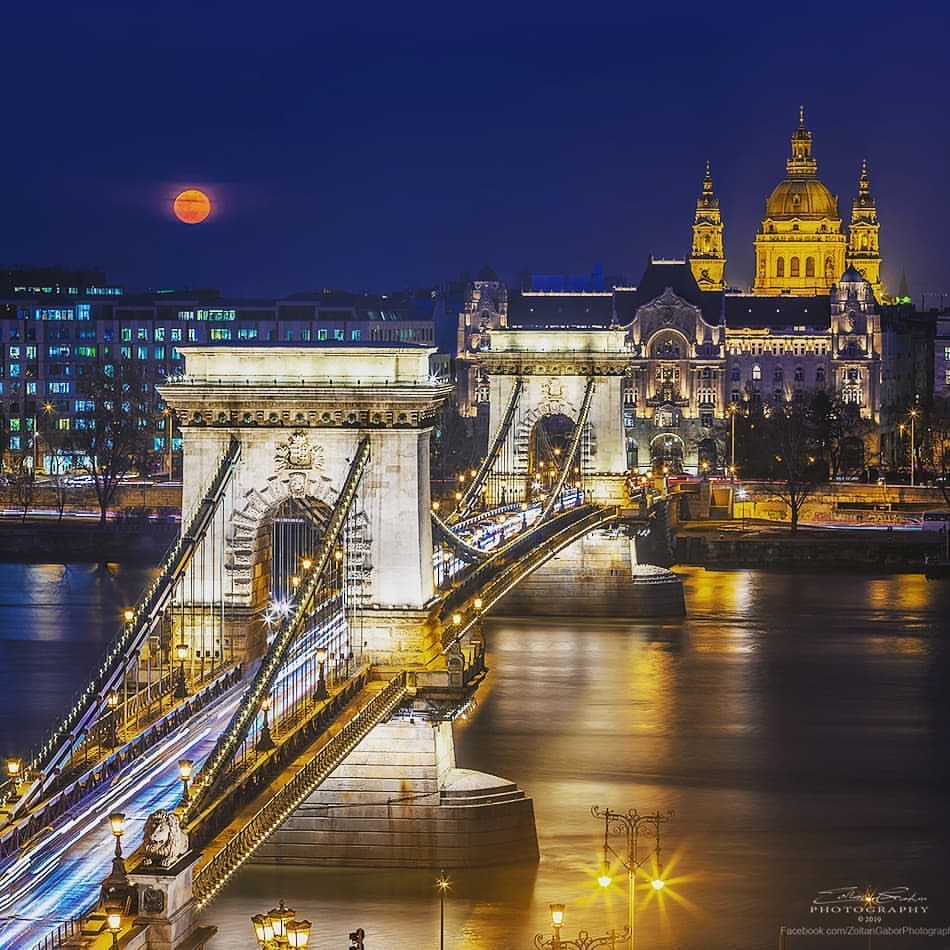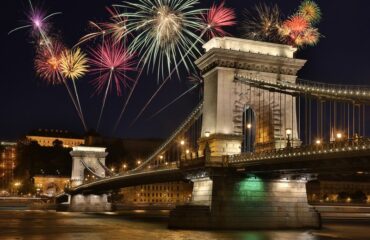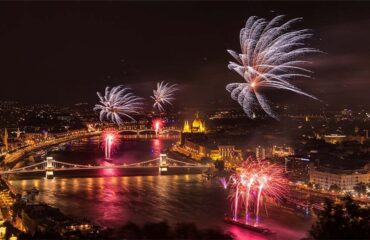Would you like to know more about one of the symbolic sights of Budapest? If you would, join us, and sail under the Széchenyi Chain Bridge Budapest with Silverline Cruises! It was represented on several Hungarian coins; the last one was issued in 2009 (200 HUF). Moreover, a radio channel is also named by it in 2007! This bridge is beautiful and has also a really interesting history.
Where is the chain bridge?
 It connects the 1st and the 5th districts of the capital city. On the part which ends in Buda, there is a tunnel because the location of the bridge wasn’t too adequate in the 19th century (when it was built), so the Castle Hill had to be holed. If you watch the bridge, in the background you can see the wonderful.
It connects the 1st and the 5th districts of the capital city. On the part which ends in Buda, there is a tunnel because the location of the bridge wasn’t too adequate in the 19th century (when it was built), so the Castle Hill had to be holed. If you watch the bridge, in the background you can see the wonderful.
A grain of history
It is the oldest and most popular bridge in Budapest. It was the first permanent bridge between Buda and Pest, and also the first one in the Hungarian part of the River Danube. So its historical role is really important. Its building was initiated by a famous Hungarian count, István Széchenyi, and it was paid by a baron, György Sina. The work started in 1839. It was designed by William Tierney Clark, and a Scottish man, Clark Ádám had also an important role. A square in Budapest, right next to the bridge on the Buda side was named after him.
During the work, there was a serious accident: one of the chains was torn, and so some parts of the bridge fell into the River Danube on the 18th of July, in 1848. Lots of people fell into the river, and Széchenyi was among them. However, the exception of one person, everyone escaped. This scene has a great role in the Hungarian movie called “Hídember” (Bridge Man) which is a biographical film about István Széchenyi. During the war of independence, the bridge was hurt because of some shots. Moreover, both the Hungarians and Austrians wanted to destroy it. Fortunately, these plans didn’t come true.
The Chain Bridge Budapest was opened in 1849, after the failure of the war of independence. The ceremony was performed by an army officer, who had a great role in the retaliation after the revolution. He was Haynau. So this event wasn’t too popular among Hungarians. Even Széchenyi was not there, because he was at a mental hospital in Döbling.
In the 2nd World War, the German army detonated the bridge. Fortunately, it was later rebuilt and re-opened on the 20th of November in 1949. At the end of the 20th century, it was renovated more times, e.g. the Communist coat of arms was turned back into the original Kossuth one.
Nowadays, on some summer weekends and special holidays, cars are not allowed on the bridge, so pedestrians can enjoy the area.
Sailing under the Chain Bridge Budapest
Sailing under this beautiful, symbolic bridge is an unforgettable experience. The architecture of it is amazing itself, but at night the bridge is floodlit. The night lights enhance the experience, so this boat trip Budapest will surely be an eternal memory!
The mysterious affair of the missing tongues
A popular urban legend says that the lions which decorate the abutments have no tongues. Lots of people mocked the lions because of this little deficit. Some people think that the sculptor, János Marschalkó committed suicide because of this. However, they are wrong. Marschalkó was absolutely not in doubt. Moreover, he proved in a menagerie that lions’ tongue doesn’t seem if their mouth is in the position in issue. If you go near, you can truly discover the tongue in the mouth of the statues.
If you are interested in the most famous and oldest bridge in Budapest, do not hesitate!
![]()
![]()
![]()

 Skip the Line – Parliament Panorama Cruise
Skip the Line – Parliament Panorama Cruise Christmas Market Cruise
Christmas Market Cruise Drink & Piano Show
Drink & Piano Show Unlimited Booze Cruise Downtown Budapest
Unlimited Booze Cruise Downtown Budapest Budapest New Year’s Eve Midnight Booze Cruise
Budapest New Year’s Eve Midnight Booze Cruise Halloween Cruise
Halloween Cruise It connects the 1st and the 5th districts of the capital city. On the part which ends in Buda, there is a tunnel because the location of the bridge wasn’t too adequate in the 19th century (when it was built), so the Castle Hill had to be holed. If you watch the bridge, in the background you can see the wonderful.
It connects the 1st and the 5th districts of the capital city. On the part which ends in Buda, there is a tunnel because the location of the bridge wasn’t too adequate in the 19th century (when it was built), so the Castle Hill had to be holed. If you watch the bridge, in the background you can see the wonderful.



